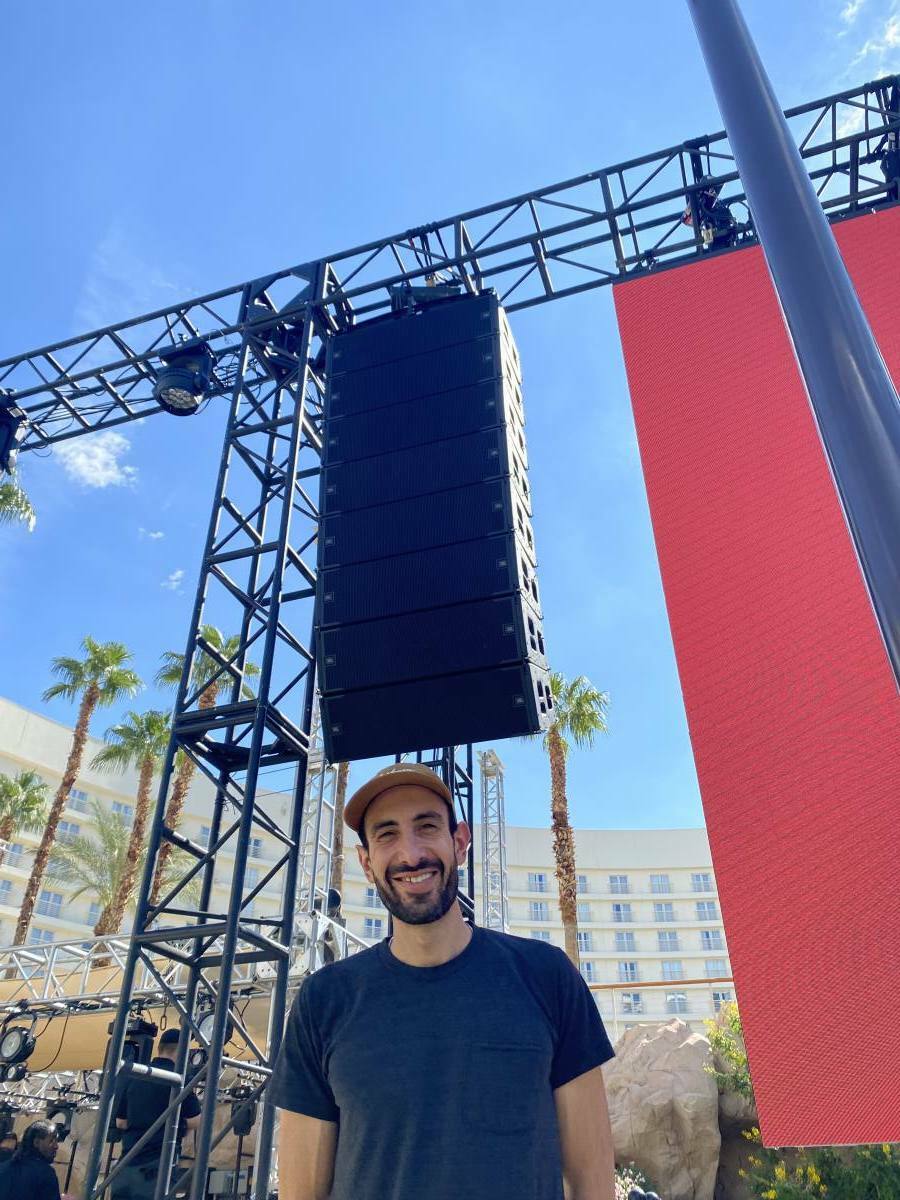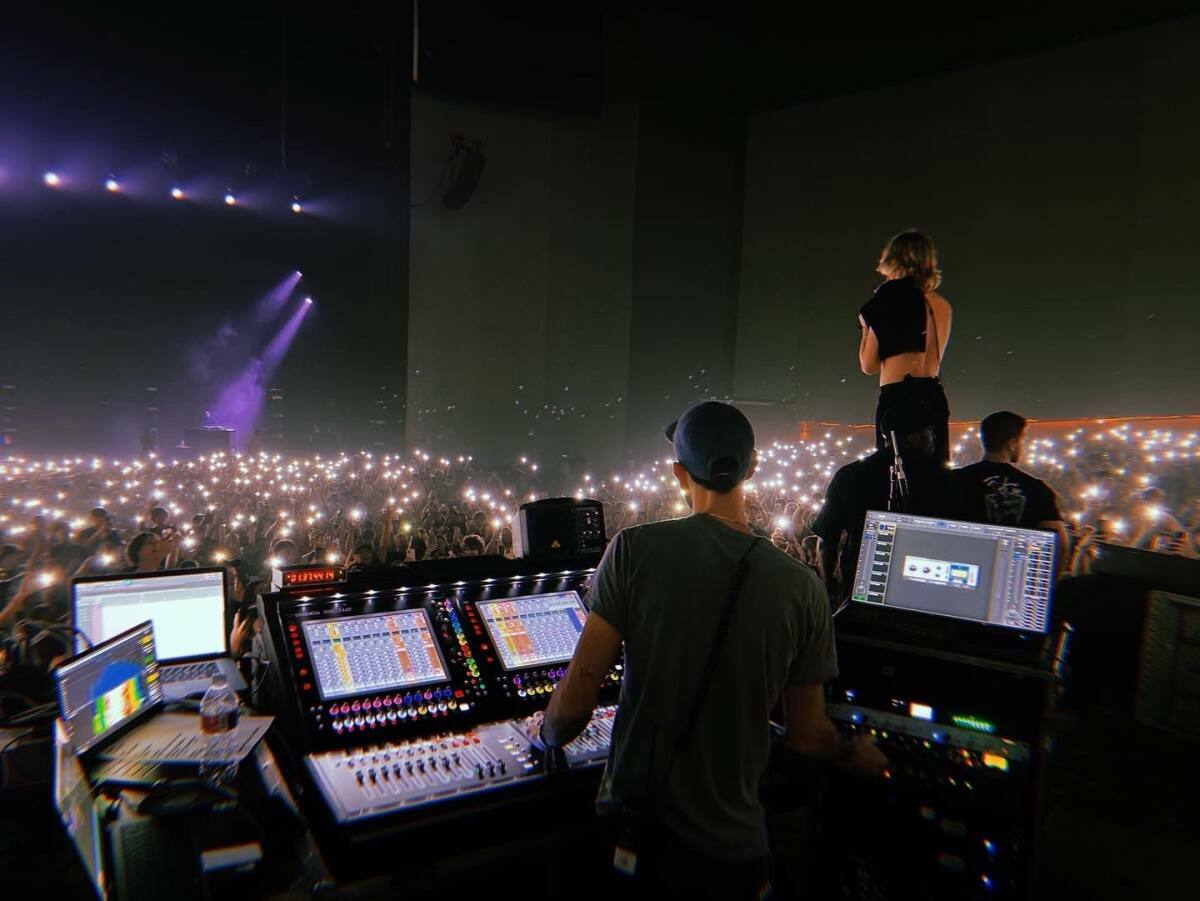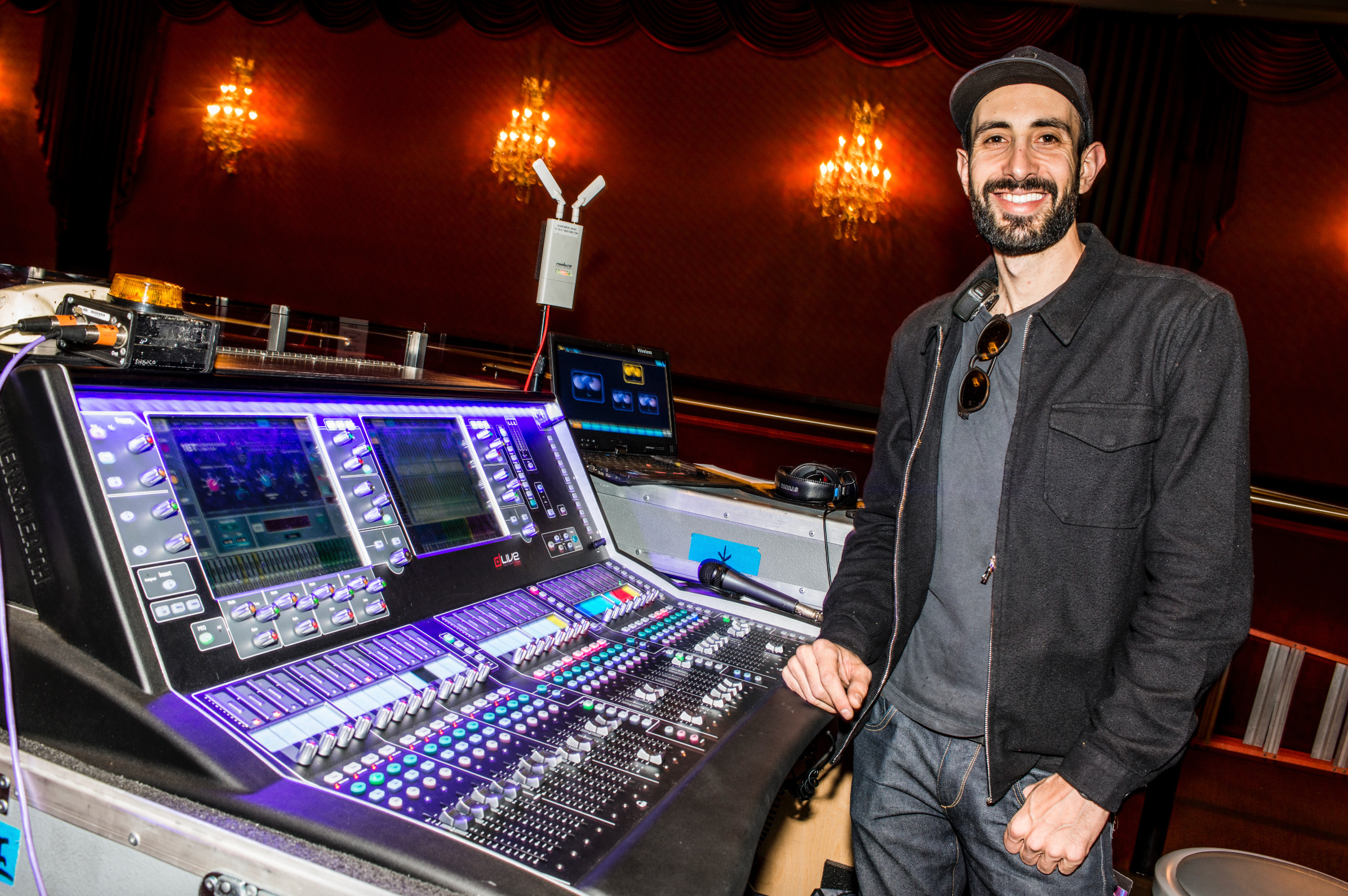Daniel Reed is the production application support specialist, production audio at Harman Professional Solutions, but in a past life, was a FOH engineer for artists including The Kid Laroi, Avril Lavigne, Fifth Harmony and 5 Seconds Of Summer. He has just wrapped up working at Coachella 2023, which was headlined by Bad Bunny, Blackpink, Frank Ocean and Blink 182.
Here, he reveals how JBL Professional line arrays were used on the Gobi tent at Coachella 2023, how he adapts to engineering for different artists and genres, his worst ever live tech mishap, and his personal favourite Coachella headliner of all time.
This year at Coachella you were representing JBL at the Gobi stage both weekends (JBL Professional’s VTX A12 line array loudspeaker system was used on this stage at the festival.) How was the festival this year for you?
Coachella has been amazing. We've had the ability to come out there and support RAT Sound with our VTX A12 and VTX A8 systems with B28 subs on the Gobi stage. All the feedback from the front of house engineers has been super positive.
It's been a really great experience in terms of getting to connect with other engineers, getting to hear other people mix and get the variety of music genres that come through each stage every single day – it’s so vastly different from show to show.
It was a wonderful opportunity to get these broader audiences exposure to JBL products, as well as being able to connect with people as a manufacturer and let them know that this is us – we're here; we are people that you guys can talk to if you ever have any questions or if you ever need additional support about the products.
Coachella has been a really great opportunity to support one of the biggest festivals in the world at the highest level. It has been nothing but a success.







